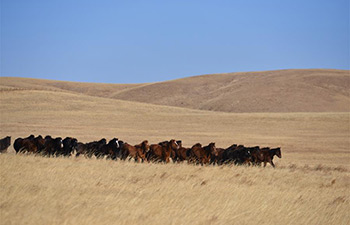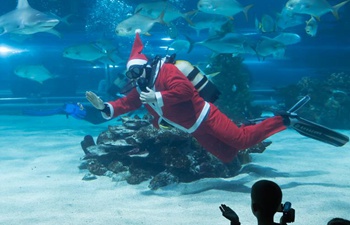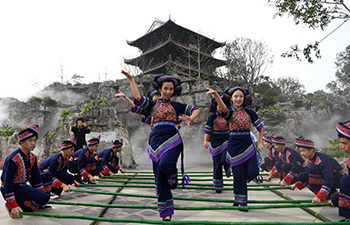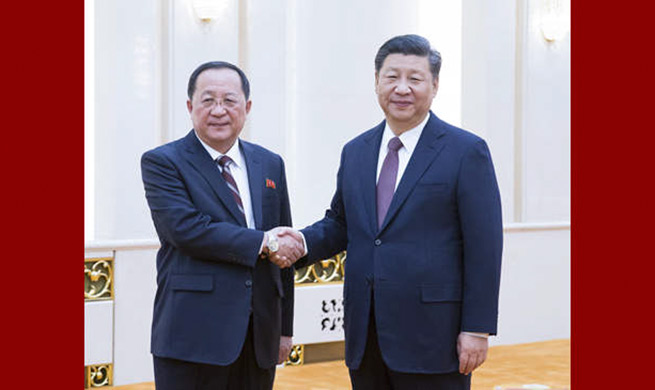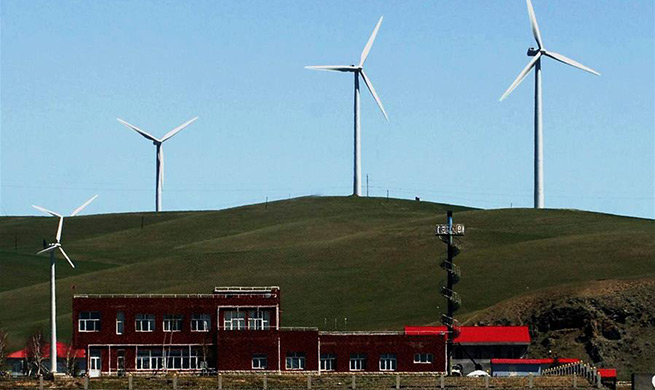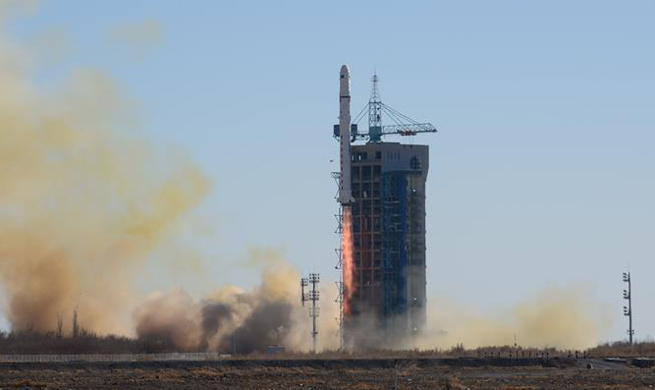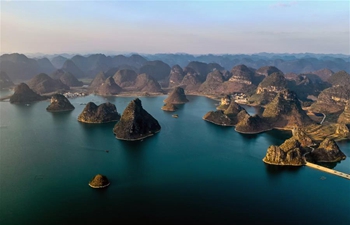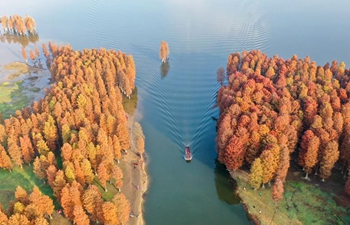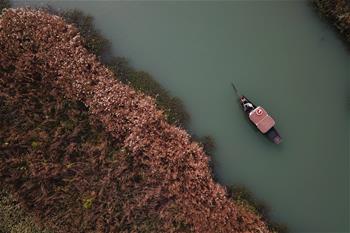TOKYO, Dec. 7 (Xinhua) -- Japanese forces and the coast guard have been continuing as of Friday to search for five U.S. Marines still missing following the mid-air collision and crash of two U.S. military aircraft during refueling training off Cape Muroto off Japan's western coast a day earlier.
The mishap occurred in the early hours of Thursday morning and involved the collision of an F/A-18 fighter jet and a KC-130 tanker plane, both belonging to the U.S. Corps Air Station Iwakuni base in western Japan, during a routine training operation around 100 km south of Cape Muroto in Kochi Prefecture.
Two of the seven Marines involved in the crash have been rescued by Japan Self-Defense Forces personnel, but one of them has been pronounced dead. The other is in stable condition, the U.S. side has said.
"The United States Marine Corps confirms that two Marines have been found. One is in fair condition and the other has been declared deceased by competent medical personnel," U.S. Forces, Japan said in a statement.
Five of the seven crew members are still missing, while search and rescue operations continued, the Japanese Defense Ministry and U.S. Forces, Japan said.
"The search and rescue operations continue for the remaining five U.S. Marines who were aboard the KC-130 Hercules and F/A-18 Hornet involved in a mishap about 200 miles off of the coast of Japan around 2:00 a.m. Dec. 6," U.S. Forces, Japan also said, adding, "We are thankful for the Japan Maritime Self-Defense Force's, the Japanese Coast Guard, and the U.S. 7th Fleet's efforts as they continue to respond to the search and rescue operation."
Japanese Prime Minister Shinzo Abe, in talks in Tokyo with U.S. Ambassador to Japan William Hagerty, said that Japan is "making its best effort to rescue the crew members as soon as possible."
Japanese Defense Minister Takeshi Iwaya, meanwhile, intimated that the details of the crash were still pending.
"We will call on the U.S. side for safe operations once we get details of the incident," Iwaya was quoted as telling a press conference.
There is speculation that the F/A-18 fighter jet was refueling mid-air when the collision with the KC-130 tanker took place, although there has been no official confirmation of this as yet.
The KC-130 tanker plane is designed to refuel both fixed-wing, tilt-rotor and rotary-wing aircraft using the probe and drogue technique, aviation experts explained.
Mid-air refueling can be a tricky process especially at night and in inclement weather, they added of the matter.
The SDF have deployed a total of 10 aircraft, while the Japan Coast Guard has dispatched six patrol vessels to conduct the ongoing search and rescue operations, officials from the government here said.
The Japanese Defense Ministry is currently trying to ascertain more details from the U.S. forces in Japan about the accident, but has confirmed that no civilian ships have reported being affected by the incident.
The latest U.S. aircraft mishap comes on the heels of another F/A-18 fighter aircraft, this one belonging to the USS Ronald Reagan nuclear carrier, crashing into the Pacific Ocean in waters southwest of Kita Daitojima Island around 290 km from Okinawa, owing to mechanical issues, on Nov. 12.
Both pilots in this incident managed to eject to safety and were safely rescued by a U.S. military chopper.
A Marines F/A -18 also stationed at the Iwakuni based crashed into the sea off Kochi, killing the pilot in 2016.
Accidents, crashes and mishaps, involving U.S. military aircraft, always draw the ire of the Japanese government as fears about safety consistently grow within the Japanese public already reticent about the U.S. military presence in Japan and the rising incidents of accidents and crime.
In some instances, due to the Status of Forces Agreement made between the United States and Japan, the former is not always legally required to disclose pertinent information on crashes and accidents related to its military hardware and can restrict access to Japanese investigators to crash sites and evidence.
